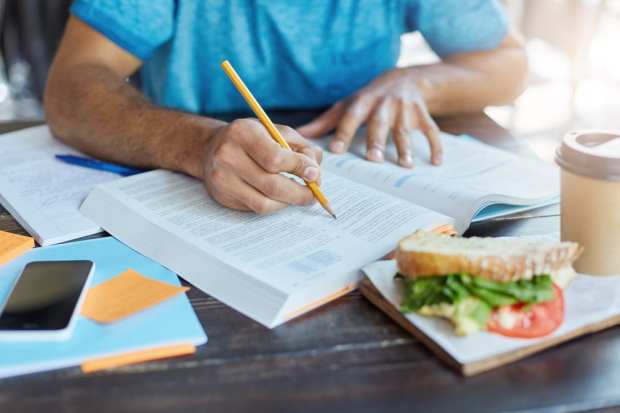Can Robots Be The Future Of College Food Delivery?

In an age when food delivery aggregators are making a push to attract students, universities are bringing food delivery into their dining plans with the help of robots. Students, staff and faculty at George Mason University, which is in Northern Virginia, can now order food and drinks through with the help of food service company Sodexo and robotics firm Starship Technologies. Through a Starship Deliveries app, which is available for iOS and Android devices, diners can order food from Starbucks, Blaze Pizza and Dunkin’ as well as Sodexo’s on-campus branded grocery store called 2nd Stop.
To place an order for delivery, diners choose a selection of food and drink items within that app and drop a pin at location where the item will be delivered. A robot, in turn, makes a trip across campus and diners can track its progress through a map. Upon the robot’s arrival, a diner can receive an alert to meet the robot and unlock it through an app. The robot has a payload of 20 pounds and the deliveries can happen within 15 minutes or faster.
The aim is to serve students, who may be open to using the technology. Starship Technologies SVP of Business Development Ryan Tuohy said in an announcement for the offering, “College students understand the benefits of technology on campus and expect it to be integrated into their daily lives.” Tuohy said also noted that college students live busy lives and the robots can help free up their time — “whether that means skipping the line, eating lunch on the lawn rather than in the cafe, or finding the time to eat better when studying for exams,” he said.
The College Campus Environment
Tuohy pointed out in a San Francisco Chronicle article that college campuses are conducive to the deployment of robots due to a few reasons. For starters, he noted that students at college are intrigued by new technology, He also described thephysical environment of universities, on the whole, well suited for pedestrians. And, while the robots can’t climb or descend stairs, he pointed out that universities have to be wheelchair accessible because of the Americans with Disabilities Act.
The robots do, however, have the ability to climb over curbs and drive across streets. In addition, they can work at night as well as in snowy or rainy conditions. To recharge, the robots can be stored in pods. In those locations, their batteries can be automatically swapped out “so they can continue to operate independently, with no human involvement,” according to the company. As it stands, its robots have traversed over 150,000 miles and made 25,000 deliveries — and now they could be a part of the playbook of serving college students.
Sodexo North America’s CEO of Universities East Jim Jenkins said in the announcement, “University dining programs are evolving their strategies to meet this generation’s elevated expectations, such as better quality, variety and service delivery.” He added that he university’s “culture of innovation and early adoption makes it the perfect campus” for the technology.
Thousands of miles away, another university is working with a robotics company.
CPG Brands Tap Into Robotics Technology
At Stockton, California’s University of the Pacific, Pepsi has recently partnered with Robby Technologies to deliver snacks and beverages via a fleet of self-driving robots on the college’s campus. The service, which is reportedly the first United States launch of robots from a major food and beverage company, delivers healthy snacks and beverages from Hello Goodness direct to students. (The brand was created by Pepsi and rolled out in 2016 to help offer customers healthy product choices.)
Through the technology, members of the campus community can order food and drink orders from 9 a.m. to 5 p.m. through snackbot app, which is available for iOS for consumers with a University of the Pacific email address. (Those diners can then order the products to be delivered to more than 50 areas across the 175-acre campus). In a press release earlier this month, University of the Pacific, Stockton Director of eCommerce Matt Camino said that the technology “is enhancing campus life for our students, staff and faculty alike, who have embraced this new way of snacking.”
From Virginia to California, robotics technology is making an appearance on college campuses. But will other colleges follow in the footsteps of the University of the Pacific and George Mason University? For now, the robotics program may already be expanding heading into the future as announcements of more retailers joining the program are said to follow in the weeks to come.
